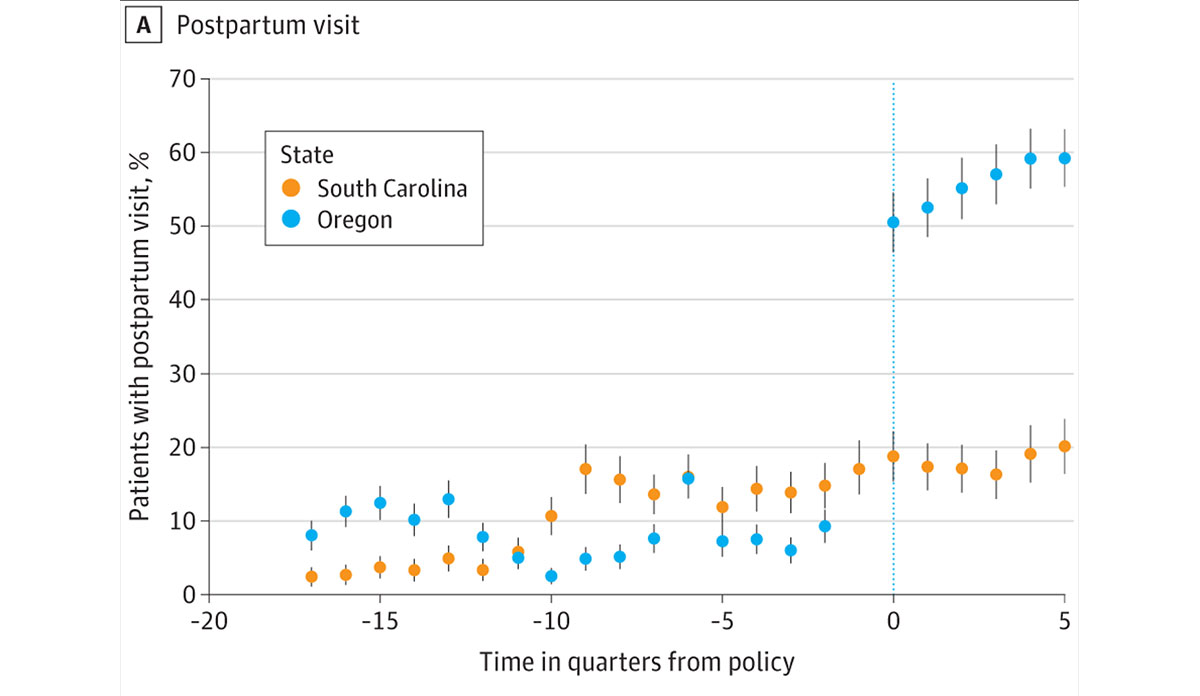Medicaid pays for 40% of births in the United States, but for immigrants who have lived here less than five years and those without documentation “Emergency Medicaid” includes payment only for prenatal visits and labor and delivery care but not for postpartum care.
Postpartum care should include a full assessment of a new mother’s physical, social, and psychological wellbeing over the months following delivery. These checkups can prevent complications from chronic conditions such as diabetes and often includes prescription of postpartum contraception.
In 2018, Oregon changed their Emergency Medicaid coverage to include 60 days of postpartum care. Dr. Rodrigues and fellow researchers collected Emergency Medicaid and birth certificate data from Oregon and from South Carolina (which covers no postpartum care) to compare the effects of postpartum care coverage.
Oregon and South Carolina had similar rates of postpartum care prior to Oregon’s policy change. In the figure above, the vertical line marks April 2018, the quarter when Oregon began providing this coverage. Following the change, Oregon mothers’ postpartum appointment attendance rose above 50% while South Carolina attendance remained below 20% for mothers on Emergency Medicaid.
Oregon is one of only a few states which covers postpartum care in Emergency Medicaid. This coverage can help address maternal depression and reduce suicide after pregnancy. It also prevents pregnancy-related deaths, one-third of which occur in the postpartum period. Postpartum care and contraception can also save money for states and individuals by addressing old and new medical problems.
Databyte via Rodriguez MI, Skye M, Lindner S, et al. Analysis of Contraceptive Use Among Immigrant Women Following Expansion of Medicaid Coverage for Postpartum Care. JAMA Network Open. 2021.














